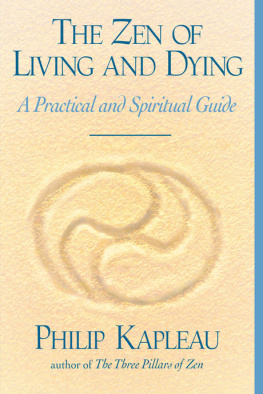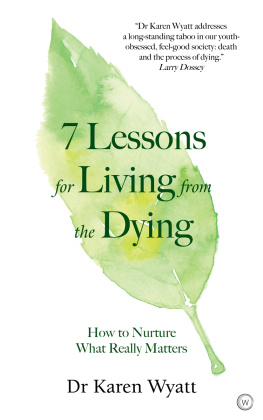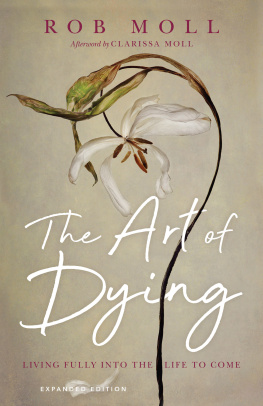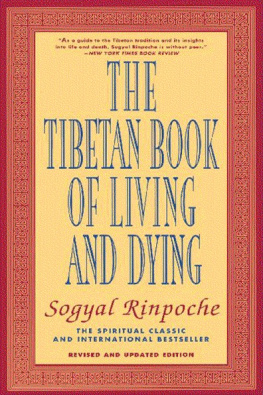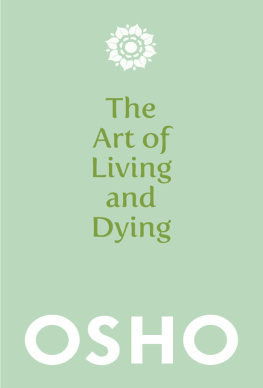Kapleau has created a profound and practical book that will appeal to people of all religious backgrounds.
Branches of Light
This is an important and profoundly useful guide for living and dying, reflecting the long experience and realization of the esteemed Zen Buddhist elder Roshi Kapleau. Offering a nonsectarian perspective on being with dying, this clearly written book makes death a truly spiritual experience.
Joan Halifax, author of The Fruitful Darkness
Philip Kapleaus fine book expands on his seminal work The Wheel of Life and Death, which has supported so many in the early search for the sources of what became the conscious dying movement. It is with a deep gassbo (bow) that we welcome this new work by an elder on the path we all tread. Thank you, Philip.
Stephen Levine, author of A Gradual Awakening and A Year to Live: How to Live This Year As If It Were Your Last
Kapleau draws so effectively and knowledgeably on his own and other religious traditions, but in a manner that is earthy, so ordinary, so enmeshed in what real living and real dying involve. The book is very accurately subtitled practical and spiritual guide because it is practical, almost a handbook, not only for dealing with the painful loss of a friend but with the shock of finitude and the taste of mortality such an occurrence inevitably evokes in ourselves. I am deeply grateful for this serene, mature, and credible book. It bespeaks a life spent probing the deep things of the spirit.
Harvey Cox, Harvard Divinity School
ABOUT THE BOOK
To live life fully and die serenelysurely we all share these goals, so inextricably entwined. Yet a spiritual dimension is too often lacking in the attitudes, circumstances, and rites of death in modern society. Kapleau explores the subject of death and dying on a deeply personal level, interweaving the writings of Western religions with insights from his own Zen practice, and offers practical advice for the dying and their families.
The first Westerner to be ordained a roshi, PHILIP KAPLEAU established the Rochester Zen Center in 1966. He is the author of the classic Three Pillars of Zen, which has sold an estimated five hundred thousand copies, as well as of Awakening to Zen and Zen: Merging of East and West. He lives in Rochester, New York.
Sign up to receive weekly Zen teachings from Shambhala Publications.

Or visit us online to sign up at shambhala.com/ezenquotes.
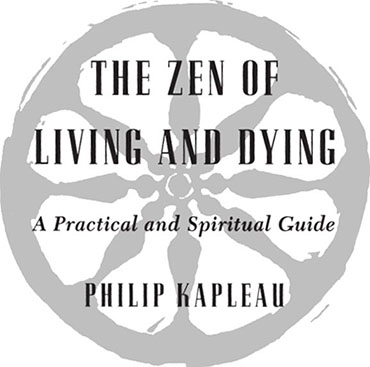

SHAMBHALA
Boston & London
2014
SHAMBHALA PUBLICATIONS, INC.
Horticultural Hall
300 Massachusetts Avenue
Boston, MA 02115
www.shambhala.com
1989, 1998 by The Rochester Zen Center
Cover art by Jim Zaccaria
All rights reserved. No part of this book may be reproduced in any form or by any means, electronic or mechanical, including photocopying, recording, or by any information storage and retrieval system, without permission in writing from the publisher.
Library of Congress Cataloging-in-Publication Data
Kapleau, Philip, 1912
The Zen of living and dying: a practical and spiritual guide/Philip Kapleau.
p. cm.
Rev. ed. of: The wheel of life and death. 1989.
eISBN 978-0-8348-0009-0
ISBN 978-1-57062-198-7
1. Death. 2. Spiritual lifeZen Buddhism. 3. DeathReligious aspectsZen Buddhism.
I. Kapleau, Philip, 1912 Wheel of life and death. II. Title.
BD444.K348 1998
294.3423DC21 97-40188
CIP
Even as night darkens the green earth
the wheel turns.
Death follows birth.
Strive as you sleep with every breath,
that you may wake past day, past death!

This book contains some diacritics and special characters. If you encounter difficulty displaying these characters, please set your e-reader device to publisher defaults (if available) or to an alternate font.
The Zen of Living and Dying is a revised and considerably edited version of Philip Kapleaus The Wheel of Life and Death, which was originally published in 1989.
NO BOOK is ever the work of one person alone. Behind each completed book are many helping hands. I am exceedingly grateful to the following people for their contributions:
The Ven. Sunyana Graef, who collaborated with me on the Karma and Rebirth sections. Without her assistance these important subjects would not be covered as completely as I now believe them to be.
The Ven. Mitra Bishop, who acted as my research assistant, typed the first draft of the manuscript, and data processed the whole text.
Geoff Lister, an experienced hospice evaluator, provided detailed information on the structure and functioning of hospices.
Tom Roberts, my longtime friend and senior student, oversaw many aspects of the book, from handling the contract to critiquing The Zen of Living and Dying.
Attorney Casey Frank, a good friend and longtime student, compiled the information on the issues of physician-assisted dying, on living wills, and on related topics.
The Ven. Bodhin Kjolhede, abbot of the Rochester Zen Center, Dr. Peter Auhagen, Dr. Christina Auhagen and I had many discussions on death and dying which provided the building blocks for The Zen of Living and Dying.
Chris Pulleyn, Ken Kraft, Dr. Mary Wolfe, and Rafe Martin read the manuscript of The Zen of Living and Dying and made many useful suggestions.
Doctors Leonard Wheeler, John Sheldon, Maike Otto, and Robert Goldman took time from very busy schedules to share with me their experiences with dying patients.
Nurses Penny Townsend Quill, Carolyn Jaffe, Nathan Hanks, and Jeffrey Estes graciously answered my numerous questions about terminally ill patients.
Thanks are due Greg Mello for his article on the life of Socrates.
Lastly, I am deeply indebted to Peter Turner, my editor at Shambhala, who did a superb job of editing the original edition of The Wheel of Life and Death for republication.

A NYONE RESEARCHING the literature on death and dying confronts a prodigious array of books and articles on these inescapable human experiences. In the past decade their number has ballooned to include controversial suicide manuals, accounts of near-death experiences, and articles on how to execute a living will. This vast literary output obviously feeds a deep human need: the need for answers to the perennial questions Where did I come from when I was born and where will I go when I die? What meaning has my life, my death?
To be human is to ask these questions. They reflect our greatest doubts, our deepest alienation from Self. Without answers that satisfy, there remains in the heart a gnawing angst that sours the sweetest of lifes experiences. For with the mass of humanity it is still an article of faith that death is the greatest of human misfortunes and that dying is the final and agonizing struggle against extinction. At the same time the incomprehensibility of death, its presumed finality, has awed and terrified men and women since the dawn of consciousness.
Next page
